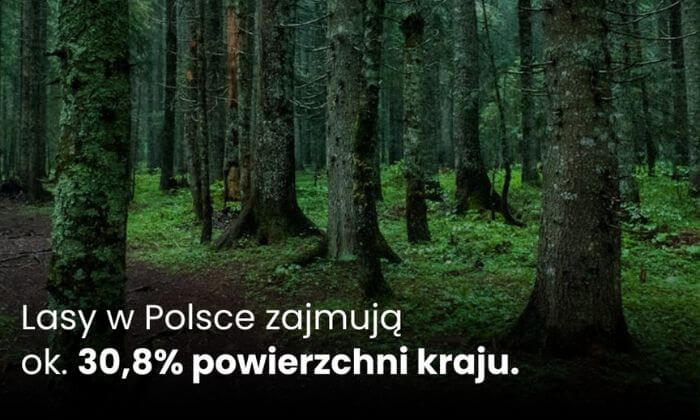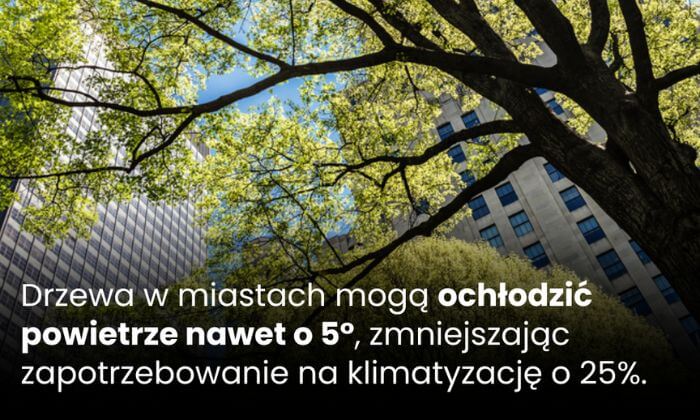June is the month marked by the celebration of World Environment Day. The theme of this year's edition is the restoration and protection of land ecosystems - meadows, wetlands and forests. The latter are special ecosystems, especially in Poland. For several months now, we have been talking about how to take care of forests through cleaning campaigns together with our Partner, the Clinex brand. In this article, we will take a closer look at forest ecosystems.
June is the month marked by the celebration of World Environment Day. The theme of this year’s edition is the restoration and protection of land ecosystems – meadows, wetlands and forests. The latter are special ecosystems, especially in Poland. For several months now, we have been talking about how to take care of forests through cleaning campaigns together with our Partner, the Clinex brand. In this article, we will take a closer look at forest ecosystems.
Forests are unique and very complex systems (called biogeocenosis), which are a set of forest plant and animal populations together with elements of inanimate nature. They play a key role in the global ecosystem, performing amazing functions: absorbing carbon dioxide, regulating the climate, removing pollutants, and providing habitats for numerous species of plants and animals. It would seem that such unique and independent systems should be protected by humans at all costs – after all, they provide us with oxygen! Yet forests around the world are under intense pressure from human activity and systematically destroyed.
The condition of forests in Poland and in the world
According to data from FAO (Food and Agriculture Organization of the United Nations), forests cover about 31% of the Earth’s surface. This is equivalent to approximately 4 billion hectares. However, since 1990, the world has lost over 420 million hectares of forest, an area larger than India! According to scientists from the Center for Biodiversity and Climate Change in Japan, gross forest loss (437.3 million hectares) exceeds gross forest gain (355.6 million hectares) – in short, we are cutting down more forests than we are planting . This trend also applies to Poland. Currently, forests in our country cover approximately 9.2 million hectares, which constitutes approximately 30% of the country’s area – coniferous forests dominate, mainly pine forests (60% of all forests).
The problem of deforestation

It is most severe in tropical regions, especially the Amazon, Southeast Asia and Central Africa. Brazil, the Democratic Republic of the Congo and Indonesia are the three countries where deforestation is most intense. The main reason is the expansion of agriculture, cattle breeding, timber exploitation and the construction of infrastructure. In the case of Brazil, the problem of deforestation concerns the Amazon – the largest rainforest in the world. Its clearing (about 11,000 km2 of forest was cut down there in 2020 alone) contributes to serious climate change, because this forest is one of the largest carbon dioxide sinks in the world.
Do you know that…

- The oldest known tree is a long-lived pine called Methuselah, which grows in California, USA. The tree is over 4,800 years old.
- Tallest tree in the world: The tallest tree in the world is an evergreen redwood called Hyperion, which grows in California. It is approximately 115.7 meters high.
The forest has power
Fortunately, intensive actions are also being taken around the world to reforest and restore forests. China is one of the leaders in this field, implementing ambitious projects aimed at increasing forest area. The Great Green Wall program involves planting trees across vast areas of northern China to prevent the expansion of the Gobi Desert. Singapore is known for intensive greening of urban spaces. The city-state is implementing programs to create “green corridors” that connect parks and nature reserves, promoting biodiversity and improving the quality of life of residents.
Forests are important… especially in cities!

How important is the presence of trees in cities? First of all, they reduce air pollution – they absorb carbon dioxide and other harmful substances, such as nitrogen oxides and sulfur dioxide. They also regulate temperature by providing shade, increasing humidity and cooling the air. The evaporation of water from the leaves additionally cools the air.
Reduces Noise Levels – Trees act as sound barriers, reducing noise levels from traffic and other urban sources.
Trees also manage rainwater – this is especially important in regions that experience rainy seasons with increased rainfall. Trees help absorb rainwater, reducing the risk of flooding and improving water retention.
That’s not all – trees in cities and forests on its outskirts improve the quality of life of residents – research shows that being among trees lowers cortisol levels, improves well-being, promotes physical activity and has a positive impact on mental health.
The protection of forest ecosystems is one of the demands of this year’s celebration of World Environment Day . You can learn about what ecosystems we have in Poland and how to take care of them on the website of the Re:Generacja program created by UNEP/GRID Warsaw.
How to take care of the forest near us?
What can we do for the forest in our area? Above all, do no harm. The forest is an ideal place for walks, but let’s not disturb its peace. A barbecue or loud party may not only cause a fire or pollute nature, but also scare away animals that live in the forest. When we see garbage in the forest, we should collect it and throw it into the nearest bin or container. If you collect garbage in Polish forests, publish your results on the Planet Heroes platform – as part of the campaign with the Clinex brand, you will receive a subsidy of PLN 20 for each bag of waste!
The protection of forest ecosystems is one of the demands of this year’s celebration of World Environment Day. You can learn about what ecosystems we have in Poland and how to take care of them on the website of the Re:Generacja program created by UNEP/GRID Warsaw.






